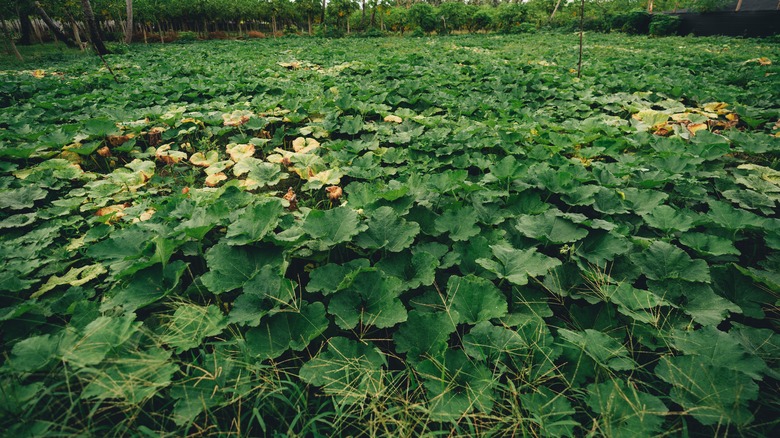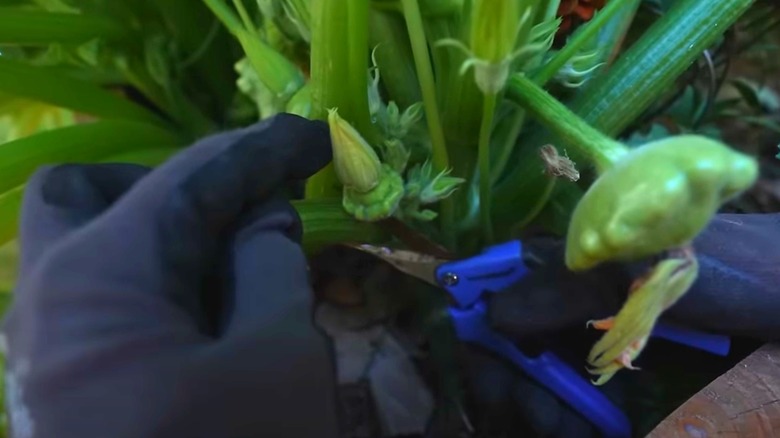How To Prune Squash Plants For A Bigger, Healthier Harvest
Growing squash in your garden can be a delightful experience. They often grow large, green foliage and produce an abundance of fruits throughout the summer and fall. A key element of getting the most squash from your plants is keeping them pruned. Pruning squash not only keeps the plants healthy, but encourages the plant to focus its energy on producing the biggest and best fruits. Make sure that when you're pruning your plants, you cut the leaves as close to the main stem as possible to prevent pests and reduce disease.
The best time to start pruning your squash is in the early- to mid-summer once they start producing flowers. If you've grown squash before, you know the plants can grow quickly and get out of hand if left unattended. So, continuously pruning your squash throughout the season will allow you to stay on top of their growth. During the summer months, avoid pruning your plant during the middle of a hot day because your plant is already stressed from the heat — pruning it during the hottest part of the day could do more damage than good. Always prune your squash either in the early hours of the morning or in the evening once it's cooled off.
Tips for pruning your squash plant
There are varying ways to prune winter and summer squash plants. Vining squash, like gourds, pumpkins, and spaghetti squash will benefit from cutting the tip of the vine following the first three to five developing fruits. Also, be sure to prune vines that aren't producing any fruits. On bushy plants like patty pan squash and zucchini, the plant will appreciate you thinning out the leaves that are growing beneath the first flowers and the fruit. Cut these as close to the main stem as possible, but be very careful not to cut the stem itself. Squash in the garden can easily overcrowd themselves and the other plants growing around them. Pruning your squash plants will allow more airflow, sunlight, and room for everything to grow. It will also allow the plant to focus more energy on growing fruit rather than leaves. After you prune your squash plants, they may likely look wilted and droopy. Don't worry though, they will bounce back after a couple of days.
Once you've pruned your squash plant, dispose of the leaves in your compost. However, if you've pruned off leaves with powdery mildew or signs of other disease, throw those away to avoid spreading the fungal spores. Sanitize and clean your pruners to avoid spreading disease, as well. Along with clean pruners, make sure you use tools that are thin and sharp. Thick pruners won't get as close to the main stem as you want.

